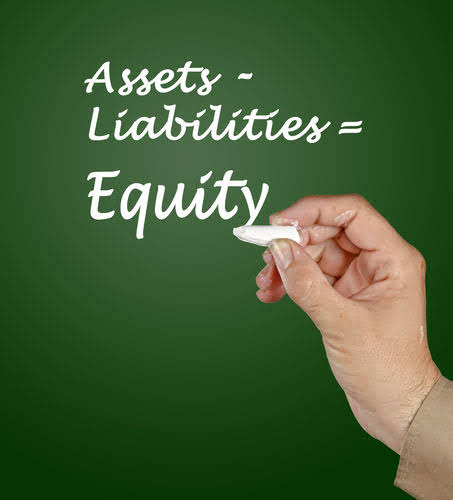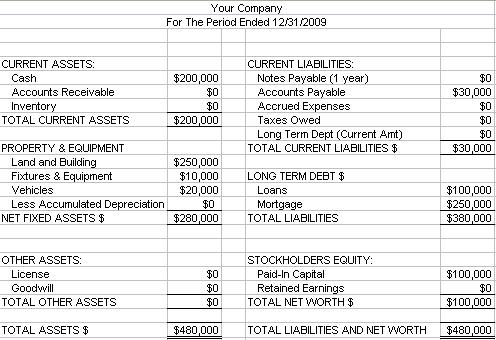Setting up an accurate bookkeeping system is essential for a business to manage its finances and to comply with tax rules. Try Shopify for free, and explore all the tools and services you need to start, run, and grow your business. The possibilities are endless, so it’s a good idea to review your personal and professional networks and reach out to those with possible links to or interest in accounting. You’ll probably generate new customers or find companies with which you could establish a partnership. Banks vary in terms of offerings, so it’s a good idea to examine your options and select the best plan for you.
- Many accounting software providers have designed programs that calculate sales tax, prepare tax forms, and even file taxes with no intervention on your part, which can save you time and hassle.
- In part two, we explore three more best practices to help you set up your tax-ready accounting system.
- Our free quote comparison tool matches you up with accounting firms that are suited to your business.
- While this is a great opportunity for brands with growth goals, it introduces confusing sales tax regulations.
- Because it can help you save time and automate certain parts of the business, so you can focus on the most important matters.
The cash-out date is the estimated date you’ll be in business until given your monthly spend and the remainder of the investment you have sitting in your bank account. In the technology and biotech industries, early-stage companies that are playing for the big outcomes need to use GAAP accounting. Many inexpensive, non-CPA bookkeepers will simply do cash based accounting — which is likely fine for a small coffee shop or ad agency. But that’s not what the tech industry expects if you are “going big. This is when you take your financial model or projections and compare them every month to your actual results.
Should you do your accounting in-house or outsource for your startup?
When you start a business, partnering with an experienced accountant can help you create an organized system to track your financial information and maintain proper records. In addition to choosing an accounting method, you’ll need to set up a bookkeeping system to track daily transactions. The accrual method is more complex than the cash basis method, but it provides bookkeeping for startups a more accurate long-term financial picture of your business. For that reason, it’s useful for providing financial information to investors or making decisions related to business growth and scaling. Your first step is to open a dedicated bank account for your business. It’s never wise to commingle your business accounting with your personal expenses.
Your accountant monitors your financials and ensures your compliance documents are in place and accurate. Your accountant should also be available to answer your questions and help you address any issues before they become larger problems. Nurture and grow your business with customer relationship management software. Estimate how many hours, on average, you would spend on startup accounting.
The Best Accountants for UK Businesses in 2023
Also, accounting software should connect to your bank and credit card accounts and automatically download your transactions. If your business is service-based, you may need project management tools. If your business sells products, you may want an accounting solution that has inventory management features. Last, look for software solutions that offer greater advantages by connecting to other business applications you already use, such as your POS system, CRM system or the best email marketing software.
Whichever accounting software you choose, you will need to customize it to suit your business. This process includes first setting the software to use either cash or accrual basis accounting. Most accounting software programs includes a basic chart of accounts, but you should set up a chart of accounts that is specific to your business, including numbered expense accounts and categories for revenue. If your expenses are grouped into preset categories that don’t reflect your operations, it can take weeks to retrospectively organize the data and provide accurate reports for board members and investors. Kruze clients used to almost exclusively use bill.com, which is a provider of accounts payable for companies of all sizes.
What is Accounting Software?
But with today’s advancements in technology, outsourcing has never been easier. Outsourcing can provide advanced and less costly bookkeeping service than a typical in-house bookkeeper. The average monthly accounting fees for a small business will rise as you add more services and the tasks get harder. Heleana Neil specialises in Business Services, managing the strategy and production of content for SMBs, helping businesses with the challenges and opportunities they face today.
- However, it may be cost-prohibitive and present a steep learning curve for small businesses that don’t need access to the advanced slate of features it provides.
- This is a question that many small business owners face when they hire an accounting professional.
- Your accountant will also prevent your business from facing fines or penalties for misfiling or missing deadlines.
- It also gives you the ability to run financial reports, and it provides you with unlimited accountant connections and transactions.
- In the United States, a popular type of legal business structure is the limited liability company (LLC).
While this is a great opportunity for brands with growth goals, it introduces confusing sales tax regulations. When you’ve reached the point where it makes sense to hire outside help, you need to establish whether that individual is an employee or an independent contractor. Starting your business at home is a great way to keep overhead low, plus you’ll qualify for some unique tax breaks. You can deduct the portion of your home that’s used for business, as well as your home internet, cellphone, and transportation to and from work sites and for business errands.
However, if you want extra assistance, Intuit offers access to professional bookkeepers and accountants who can help you configure the software in a way that makes sense for your business. Additionally, QuickBooks Online allows you to create custom invoices and forms so your company’s branding is always at the forefront of client-facing communications. Once your budget is in place, it is time to set up an accounting system that will help you keep track of your financial information. Setting up these systems can be time consuming and complicated, so it may be beneficial to seek the help of an outside professional who specializes in accounting systems for startups. For some small business owners, an accounting platform that tracks expenses and sends invoices is all that’s needed. For others, advanced reporting, inventory management and e-commerce are more important.
What is a full charge bookkeeper?
What is a Full Charge Bookkeeper? A full-charge bookkeeper is the same as a bookkeeper, except that the «full charge» part of the title designates the person as being solely responsible for accounting.
Without the right accounting system in place, a startup might not be able to accurately track and report its income and expenses, or comply with tax laws. By having an accounting system in place, a financial startup can ensure it is adhering to all applicable regulations and requirements. FreshBooks uses cloud-based accounting and invoice software that can be accessed via iPhone, Android, and iPad apps.















